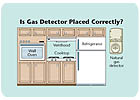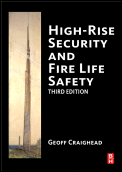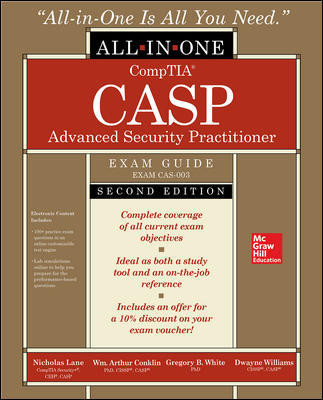-
What is an acceptable mounting location for a propane gas detector?
a. High on a wall
b. Low on a wall
c. At approximately 5 feet above the floor
d. Any of the above
e. None of the above
-
What is an acceptable mounting location for a methane gas detector?
a. High on a wall
b. Low on a wall
c. At approximately 5 feet above the floor
d. Any of the above
e. None of the above
-
What is an acceptable mounting location for a hydrogen gas detector?
a. High on a wall
b. Low on a wall
c. At approximately 5 feet above the floor
d. Any of the above
e. None of the above
-
What is an acceptable mounting location for a carbon dioxide detector?
a. High on a wall
b. Low on a wall
c. At approximately 5 feet above the floor
d. Any of the above
e. None of the above
-
Whenever possible, you should always install gas detectors in a corner.
a. True
b. False
-
An unlit disposable butane lighter can be used to test what type of gas detectors?
a. Refrigerant
b. Methane
c. Propane
d. Any of the above
e. None of the above
-
Methane gas and propane gas require different types of detectors.
a. True
b. False
-
Which of the following can be a potential source of carbon monoxide?
a. Wood-burning stoves
b. Automobile exhaust
c. Furnaces
d. All of the above
e. None of the above
-
Ammonia detectors can be mounted either on the ceiling or high on a wall.
a. True
b. False
-
Water detectors are always mounted on the floor.
a. True
b. False
-
In a residential application, you always should install carbon monoxide detectors:
a. in the attached garage.
b. directly above all fireplaces.
c. in the attic.
d. All of the above
e. None of the above
-
Since they are 24-hour devices, carbon monoxide and gas detectors should be connected to the same zone as tamper switches.
a. True
b. False
-
High-temperature devices can be used as fire detectors.
a. True
b. False
-
Which UL standard covers single- and multiple-station carbon monoxide alarms?
a. 681
b. 1023
c. 1026
d. 2034
Increase safety, prevent damage
Properly installing environmental detectors can increase the overall safety of your customers and help prevent or limit damage to property. It can also provide a good vertical marketing program to existing customers, but only if you have the requisite knowledge to properly select and install the necessary detectors. To see if you can sniff out the benefits of environmental detectors, take the following quiz.ANSWERS ON PAGE 158.

What’s Wrong with This?
Wally `Larman installed a security system for a residential customer that included a combustible gas detector in the kitchen. Wally found out that the gas company supplied methane, or natural gas, to the home and selected a UL-listed detector for residential use. He installed the device as shown in this diagram, connected it to a 24-hour zone of the control panel and tested it according to the manufacturer’s instructions. Everything seemed to work perfectly, but the homeowner was not happy. Can you see what Wally did wrong and what he must do to correct the problem?5-Minute Tech Quiz Answers
Here are the answers to What’s Wrong with This? and the 5-Minute Tech Quiz that appears on Page 63.- b – Because propane is heavier than air, the detector should be mounted low on the wall.
- a – Because methane is lighter than air, the detector should be mounted high on the wall.
- a – Because hydrogen is lighter than air, the detector should be mounted high on the wall.
- c – Most manufacturers of carbon monoxide detectors recommend that the device be mounted at “breathing height†or about 5 feet above the floor.
- b
- d – Although each manufacturer may describe different testing techniques, an unlit butane lighter often can be used to test all of these detectors. You should check with the manufacturer of the detectors that you install to determine the recommended testing procedure.
- b – The same detector may be used for both gases, but the installation instructions are different due to the physical characteristics of the gases.
- d
- a
- b – Depending on the device used and the detection required, sometimes it is installed on the wall an inch or more above the floor. This would be common for detecting overflow from a drip pan or in other locations that may normally have some water present. If installed on the floor, care should be taken to prevent alarms from normal washing or cleaning of the floor.
- e – Attached garages can have a high level of carbon monoxide due to idling vehicles, as would the area directly above a fireplace, and the temperature within an attic easily can exceed the rating of the detector.
- b – Although they are 24-hour devices, carbon monoxide and gas detectors should be placed on independent zones. It is critical that the occupants and remote monitoring office know what caused the alarm so that appropriate action can be taken.
- b
- d – 2034 is the Standard for Single and Multiple Station carbon Monoxide Alarms, 681 is the Standard for Installation and Classification of Burglar and Holdup Alarm Systems, 1023 is the Standard for Household Burglar-Alarm System Units, and 1026 is the Standard for Electric Household Cooking and Food Serving Appliances.







